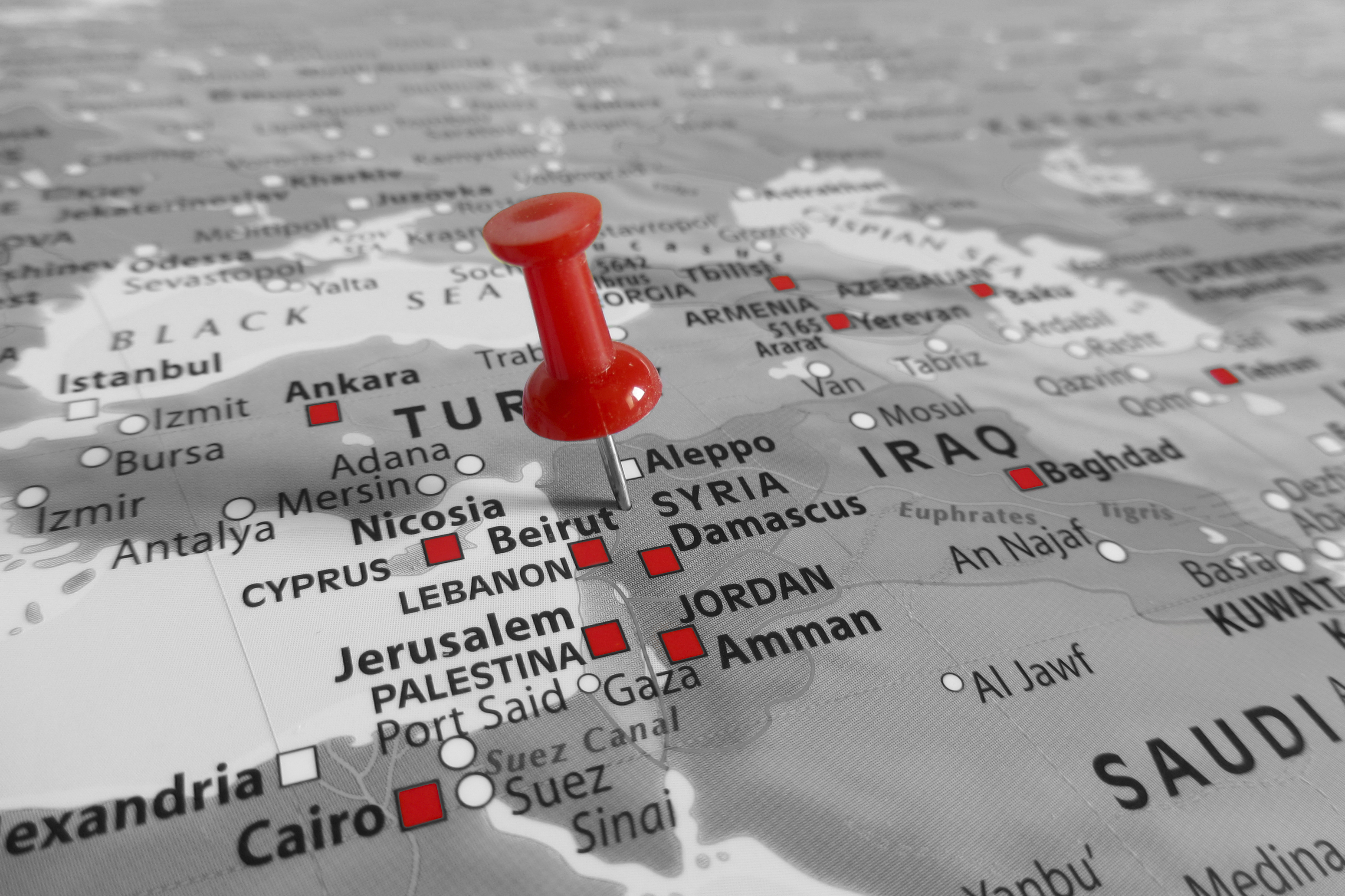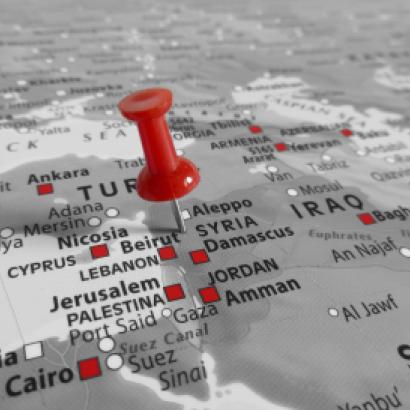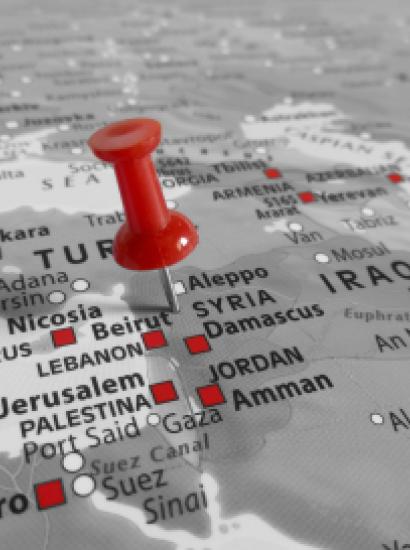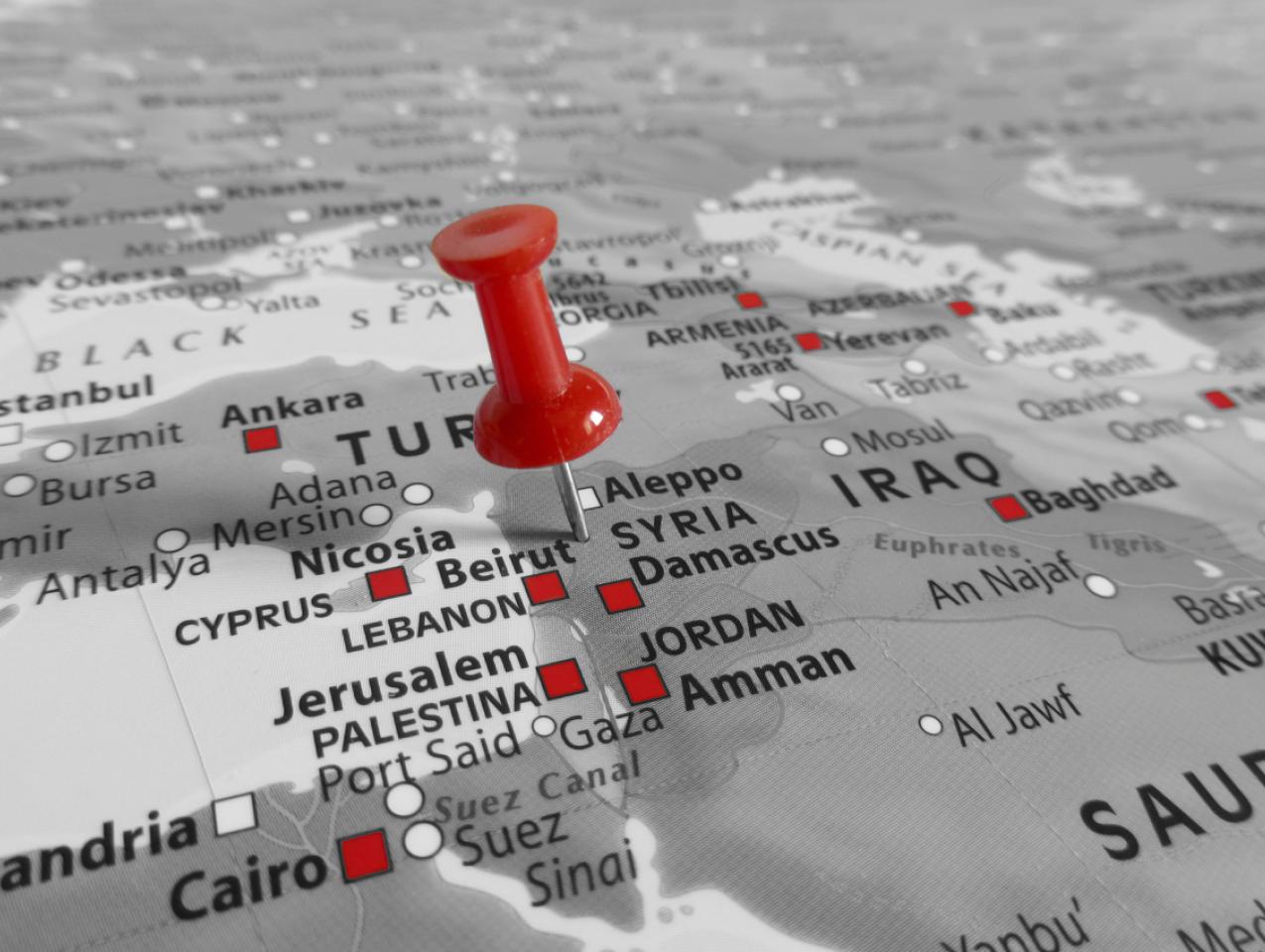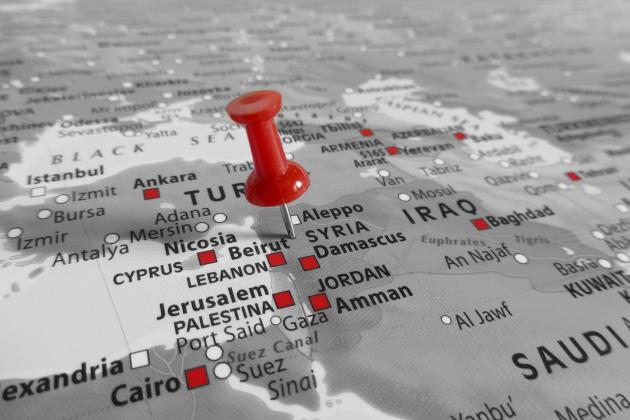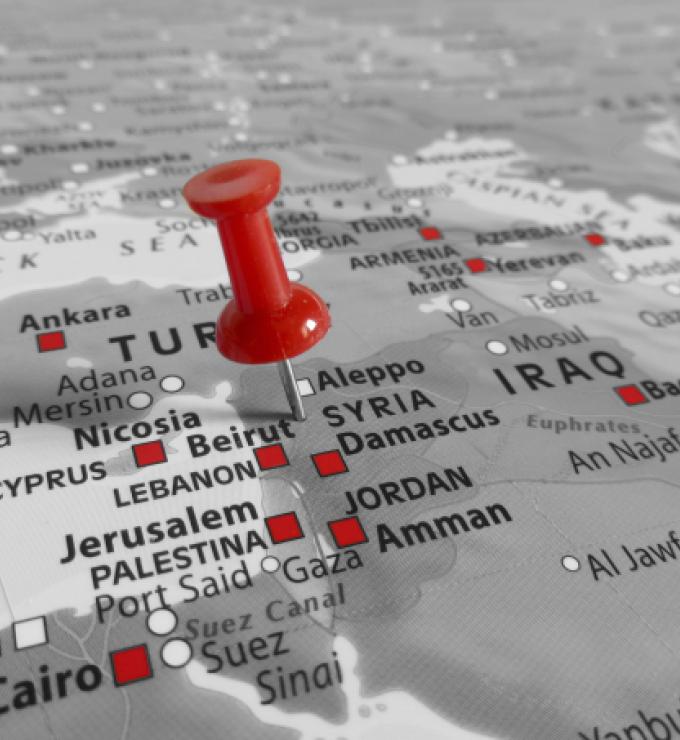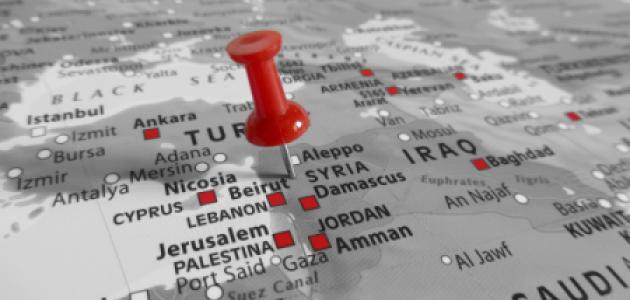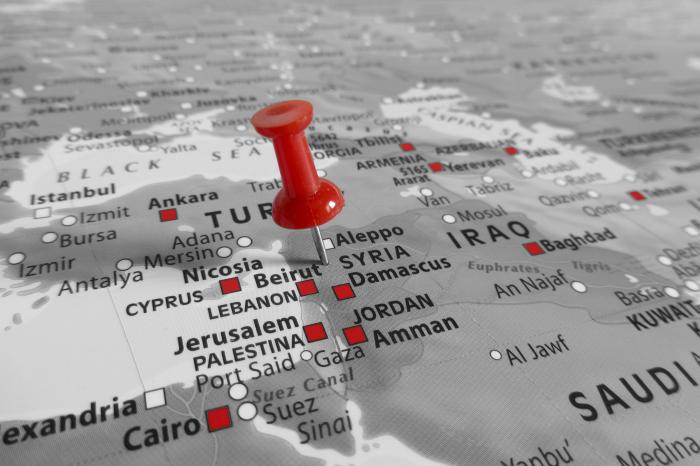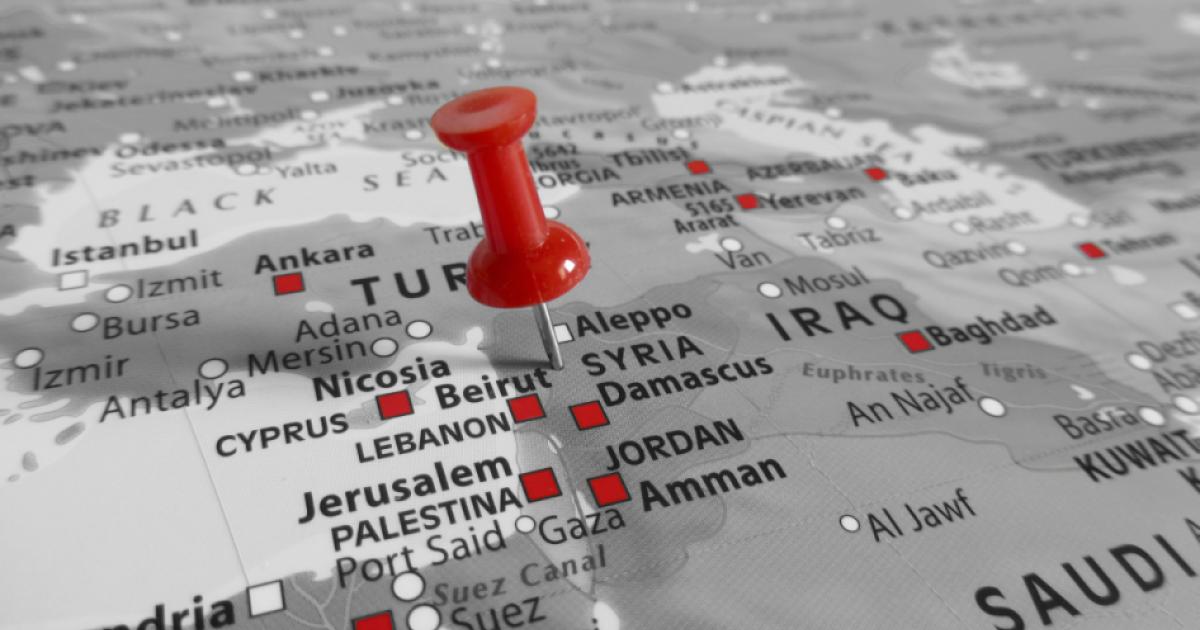I had to take a pause once news filtered out that the ‘caliph’ of the Islamic State, Abu Bakr al-Baghdadi, had been killed in the small village of Barisha near the Syrian-Turkish border—of all places. Notwithstanding that that area of Idlib Province is currently controlled by his ideological rivals—fellow jihadists who would have gladly killed him off themselves—and has been so for a number of years, there were several other mitigating factors that would deem such a locale a forbidding refuge from a jihadist security mindset. The area was sparsely populated, and a band of Iraqis such the caliph and his retinue would have certainly stood out, a function of too many nosy neighbors with little else to do but to watch the comings and goings of their tiny rural pocket. Furthermore, there were sectarian enemies of al-Baghdadi’s lurking around, a vestigial presence of heterodox Druze who could conceivably eye-ball the house he was hiding in from their nearby hilltop village. These factors, I imagined, may have loomed large in how the logistics team of the world’s most wanted terrorist would have approached the Barisha option. I was mistaken.
I was driven through that area a little over a decade ago on my way to the ruins of a Byzantine-era basilica at Qalb Lozeh, the Druze village nearest to Barisha. Fourteen centuries prior, right before a long decline, these areas had grown prosperous as the wealthy and prestigious citizens of Antioch, the Roman Empire’s third largest city at one point, built-up summer homes and tended to olive orchards there. However, my interest in mute, sun-scorched stones was minimal. I was there to see a part of Syria for which there were too few answers: When did the Druze faith establish itself there? How did it manage to hang around for so long? At the time of my visit, there were around 15,000 Druze inhabiting a dozen or so villages. Two centuries ago this community faced a punitive campaign by a local governor over some infraction, as a result thirty of their villages were permanently abandoned. But asking these sorts of questions in a place so removed from attention, scholarly or otherwise, quickly got me into trouble.
At Qalb Lozeh, where my arrival coincided with funerary rites held for one of their kinsmen, rites that the Druze usually shield away from the uninitiated, a stranger such as myself taking too impudent of an interest would naturally be suspect, and in a dictatorship such as that of al-Asad’s would consequently be detained and held up until the local secret police office was called-in. My quick-thinking and fast-talking guide extricated us from that situation, but it did leave me with an impression as to how tense and vulnerable such an outpost of heterodoxy had been feeling even years before the fires of the Syrian civil war were to break out.
The surrounding area was such an insular place that I later jotted down something that my guide had said when he casually remarked that Barisha and other villages around were full of newcomers who had moved there from the Euphrates valley to Syria’s east. They were from the Baggara tribe, he added.
I remembered this association when I heard the news about al-Baghdadi: could the caliph have felt safe among tribesmen who originally hailed from where the Islamic State had its firmest bedrock of support? But a quick dip into the history books refuted that thought and revealed that what my guide meant by ‘newcomers’ meant that they had settled those lands in the 1870s, which may indeed sound as a recent event to someone who has roots going back several centuries in the nearby fortress town of Harim.
Strangers did eventually overtake Qalb Lozeh too as the war got going. Dozens of Druze were killed in the fighting, and allegedly many more were made to convert to Sunni orthodoxy by the jihadists. Thousands of the Druze escaped to other parts of Syria and to Lebanon, halving their numbers according to most estimates. Those who stayed behind in villages like Barisha have to pass new settlers such as Salafist Uyghurs from the Turkestan Islamic Party as well as Tajik jihadists as they head out to their fields, according to recently published accounts. Yet, if I were a jihadist logistician, I would still fret about having a few hostile and sullen Druze in the vicinity who could be reporting details of their surroundings to several regional and Western intelligence outfits.
I shared these thoughts on Twitter, admittedly with a smugness befitting that of a pedantic expert who had actually been to those areas before anyone had taken much interest in them. I was quickly put in my place by a commenter who asked, “Which history book are you reading now? Maybe you should update your information.” Two other commenters helpfully steered me towards more relevant data. The general demographics of this area had changed dramatically, not just by the Druze fleeing, but by internal displacement, with Barisha’s population quadrupling from a pre-war estimate of 2,000, with a 45 percent increase since August alone when fighting in the southern part of Idlib Province returned the large town of Khan Sheikhoun back under the control of the Syrian regime. With such an influx of strangers, a retinue of Iraqis may actually go unnoticed or at least unremarked on, and the prospects of Barisha as a hideout for the caliph would have greatly improved.
If war had so radically reconfigured an enclave as unchanging as that of Barisha’s, where a family who had been there for five generations would still be dismissed as newcomers, then how are we to think about Syria at large where the fighting has claimed hundreds of thousands killed and maimed, and a majority of the population displaced?
Demographic flux is not a new phenomenon in Syria. The vast majority of the Arabs, Kurds, Circassians and Christians who live in the northern part of the country would count as ‘newcomers’ too by my guide’s classification. That is one reason, presumably, why Turkish President Recep Tayyib Erdogan feels comfortable peddling plans for population transfers in that area, replacing Kurds with a million Arabs who had taken refuge in Turkey, as he had stated often in recent months. Seventy years ago a Syrian president, having freshly undertaken the first of the country’s many coups, floated a plan to settle hundreds of thousands of Palestinians on that same real estate by way of finding a resolution to the conflict with the newly born state of Israel. Two hundred years ago many of the aforementioned Druze of Idlib fled towards Jebel Suwayda to Syria’s south, which their coreligionists from Lebanon had begun colonizing only a century earlier, with time rebranding it the ‘Mountain of the Druze’.
At the turn of the last century Raqqa, a stronghold of the jihadist caliphate not too long ago, and once, briefly, a seasonal seat of power for the Abbasids a millennia back, was peopled solely by Ottoman state functionaries. The population swelled a bit as Circassians, displaced by Russian expansionism into the Caucasus, were resettled there right before World War I, followed by columns of Armenians surviving Ottoman atrocities across Anatolia during the war. They were followed by sedentarizing Bedouins.
To the Syrians who had survived Ottoman conscription and straggled back to their villages and towns after the war, having been lucky enough to outlive the severity of the Russian front save for losing a few digits or toes to frostbite, the homeland they had known would have felt changed and disorienting after enduring the ravages of famine and economic breakdown, not to mention the eclipse of the Ottomans and the advent of British soldiers. The changes were significant but still within a general experience of massive population displacements that the Ottoman Empire had undergone for over a generation as Muslim refugees streamed in from lands correspondingly lost to Islamdom in the Caucasus, the Balkans, Greece, and Thrace. Those experiences hardened the hearts of the last administrators of the Ottoman lands, as well as the new ones of the soon-to-born Turkish Republic, to counter with displacing millions of native Christians. It was against this backdrop that young men (and a significant number of women too) found no recourse but to join previous waves of migrants trying to discover riches in the Americas—by the mid-1920s an estimated one fourth of Syria’s population was peddling and toiling in such far off destinations as Buenos Aires, Sao Paulo and New York City.
A population need not be uprooted for a sense of flux to set in. The idea of ‘Greater Syria’ and ‘Natural Syria’ held that the country would include the entirety of the Levantine coast—meaning both Lebanon and Alexandretta—as well as Palestine and ‘Jordan’, the latter two constituting ‘southern’ Syria. For some a Syrian homeland extended to the Western Taurus Mountains, to northern Arabia, and out to Cyprus. Such were the expectations of Syrian nationalists after the war, and in many ways, they had a point. As modern economies took shape in the nineteenth century, several littoral towns became export and import harbors for the Syrian interior. Borders among newly minted nation states cut these natural trade routes. The Syrian-Turkish border, the same one Erdogan now wants to hop over, runs for the most part along a railway linking Aleppo to Mosul built during Ottoman times. This line simply represented what railway engineers deemed to be the best place to lay down tracks. It was built to facilitate trade and travel that had been occurring for centuries, one that constituted the raison d'être for the endurance and prosperity of several metropolises. But French, British and Turkish bureaucrats apportioned those cities to three new countries, now caught behind custom dues and red tape.
Even the Syrian-Iraqi border as we know it today was the odd outcome of Iraqi nationalists, then serving the post-war Syrian regime under Emir Faysal, who were actively trying to liberate as much ‘Iraqi’ territory from British occupation by pushing the border eastwards, thus inadvertently winning the liberated territories for a future ‘Syria’.
Somewhat aware of the uncertainty and flux of those lands, the Woodrow Wilson administration decided to wade into ‘unknown’ Syria. There had been a steady campaign during and after the war lobbied for by Syrian nationalists, many of them active in the New World, to invite the United States to ‘Greater Syria’ as the preferred post-war mandatory power, if there had to be one. Consequently, a wise decision was taken by the Americans to send their own commission of inquiry to ascertain public opinion in Syria. That decision was followed up by a wiser decision in staffing the commission with non-experts, for Wilson allegedly believed that “an empty mind is more receptive of the truth than one affected by experience and study.” (America’s Forgotten Middle East Initiative: The King-Crane Commission of 1919, by Andrew Patrick, p. 59). This was a roundabout and probably accidental acknowledgement of Syria’s reality at the time: one needed to look at it afresh, for too much had changed.
Even so, post-war Syria still boasted remarkable continuity. Not a few bloodlines and property records went back hundreds of years in the urban centers of the interior such as Damascus, Homs and Aleppo. In the second half of the nineteenth century the Ottomans enacted policies to coopt and incorporate the urban, rural and tribal elite, doing so rather successfully and broadly. That ‘Last Ottoman Generation’ ran Syria’s affairs for a decade after the Ottomans were no longer.
Beyond the upheavals of WWI, as Syrians grew more accustomed to their constrictive borders, one would have assumed that a country’s new sets of metrics and data can give a fair indication of future trajectories. Yet the country did not yield all of its secrets to even the most astute of watchers, both Syrian and foreign: hardly anyone in the early 1960s could have envisaged Syria being ruled by coterie of minority Alawite officers by the decade’s end; scenes from the early rumblings of the 2011 Syrian rebellion, with youths tearing down the portraits of Hafez and Bashar al-Asad, were unimaginable to those who knew the country well, or thought they did.
However, it is my sense that the magnitude of dislocation nowadays, both in terms of physical space and societal narratives, is much larger and runs far deeper than back then at the inception and application of the ‘idea of Syria’ when the King-Crane Commission had embarked on its mission. In this Syrian paradigm there is a difference between what is unknown and what is unknowable. The former could be addressed by investigation, the latter cannot. The unknowable is still unformed, probably far from it. Such uncertainty should prove humbling for the specialist. All the more so a tad heartbreaking, for few can study a place and its people without feeling a form of attachment, if for nothing than the gratification of knowing a story fully.
Until recently, one could still explore multiple avenues of narrative continuity in Syria, even some of the more obscure ones that would have only survived in a hushed whisper or a yellowing, overlooked record. For example, in the spring of 1870, in Damascus, specifically in the Maydan neighborhood, a few dozen adepts of the Shadhiliyya-Yashrutiyya Sufi order experienced concurrent visions during their sleep which they interpreted as a divine mandate instructing them to convert to Catholicism. They turned to a Spaniard, specifically a Catalan monk, a Superior stationed at the Franciscan monastery near Bab Touma on the other side of town. His name was Emanuel Förner. Förner must have been mindful of the massacre that had unfolded in those Damascene alleyways near his convent a decade past, as Muslim and Druze fanatics fell upon defenseless Christians. He would have understood how provocative and sensitive such a mass conversion on a scale certainly difficult to hide would appear to the Muslim authorities and populace, and the ramifications and reactions it may entail once revealed. He consequently wrote to Patriarch Guiseppe Valerga in Jerusalem seeking guidance. But Förner did not await instructions it seems, for he baptized them anyway and received them into his church.
We have a somewhat detailed account of what happened as relayed in the memoirs of Isabel Burton, the wife of then British consul, and famed writer-explorer, Sir Richard Burton. The Burtons would spend the years 1868-71 in Damascus, with this particular affair, the conversion of the Yashrutis, resulting in their recall. Isabel maintains that the experience broke Sir Richard’s heart and career, contributing to his early death. Burton, a brilliant and courageous man, possessor of one of the superlative minds to have studied the region, co-author of Unexplored Syria, a classic of the genre, was also one prone to self-aggrandizement and a modicum of gullibility. Just as he came to believe the blood libel against the Jews, another tale originating in Damascus, so too did he see himself as the redeemer of this newly-baptized Damascene flock. Isabel follows up with several intriguing assertions. For one, she tells us that eventually 700 persons were baptized.
I am a historian who is generally interested in how memory and narratives work and function in the Middle East: Why are certain things remembered while others forgotten, and how do these memories inform the decisions of the grand and the lowly? What I usually do, when studying a country, is to take a loose historical thread and begin pulling at it, to see where it leads. It was in that vein that I had been on the trail of those converts, on and off, for years. Tales of religious turncoats and crypto-believers are still all the vogue across the Middle East, ranging from the Moriscos of the Iberian Peninsula, to the Doenme of Turkey, to the secret Jews of Mashhad; books on the topic sell briskly and slant titillating and conspiratorial. Yet no one remembers or wants to remember this particular incident, one that went through the Islamic courts of the time and involved exiling a dozen of the more stubborn zealots to the depths of the Libyan desert. Even after all this time had passed, Franciscan authorities kept stonewalling me all the way from Damascus to Jerusalem, refusing to admit to it. On my last visit to Syria, over a decade ago, I had also tracked down the surviving head of the Shadhiliyya-Yashrutiyya in Darayya, a small town, now a suburb of Damascus, where the leader of the converts and some of his followers came from, but he too had no knowledge of the affair. But still, he mentioned two small Christian congregations nearby, and that I should take my questions to them. Maybe someone among them has a memory of the affair. It wasn’t much of a lead, but at least it kept the inquiry moving, one that would have to wait until I come back.
I never got to go back, and Darayya is no more; smashed by the regime’s artillery and airstrikes, its last rebels transferred to Idlib as part of a population swap. Some may have even ended up in Barisha. A narrative is a brittle thing, a secret narrative more so. It is difficult to imagine it surviving such convulsions. The story of what happened to the converts and their progeny may as well be relegated from an unknown to an unknowable, now forever.
The past is no longer a reliable guide to Syria’s present. It certainly offers little by which to gauge an immediate future. Many of the changes that have occurred there are as yet untallied and unacknowledged as the changed circumstances of Barisha demonstrate. It would be wise for a new U.S. policy to revisit the moving spirit of the King-Crane Commission from a century ago, should there be an inclination to wade into Syria once more.







